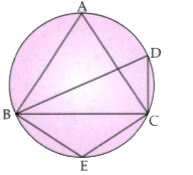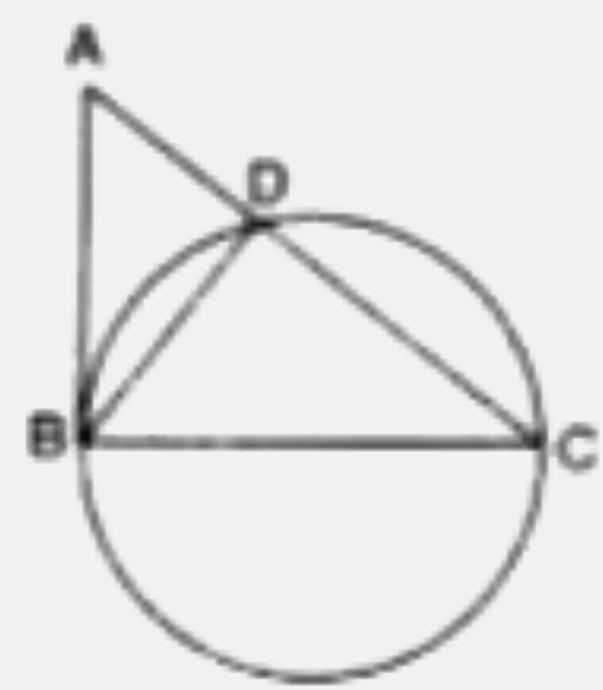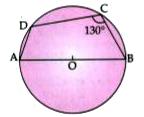In the given figure, ∠DBC=58∘, BD is diameter of the circle. Calculate :
(i) ∠BDC (ii) ∠BEC (iii) ∠BAC

The correct Answer is:32∘,148∘,32∘
Step by step video, text & image solution for In the given figure, angleDBC=58^(@, BD is diameter of the circle. Calculate : (i) angleBDC (ii) angleBEC (iii) angleBAC by Maths experts to help you in doubts & scoring excellent marks in Class 10 exams.
Updated on:21/07/2023Topper's Solved these Questions
Similar Questions
In the given figure, ∠COB=40∘,AB is the diameter of the circle. Find ∠CAB:

View SolutionIn the given figure, ∠ABC=90∘ and BC is diameter of the given circle. Show that:

AC×AD=AB2
View SolutionIn the given figure, ∠ABC=90∘ and BC is diameter of the given circle. Show that:

AC×CD=BC2
View SolutionThe given figure shows a square ABCD and an equilateral triangle ABP.

Calculate :
(i) ∠AOB
(ii) ∠BPC
(iii) ∠PCD
(iv) reflex ∠APC
View SolutionIn the given figure , BD is a side of a regular hexagon. DC is a side of a regular pentagon and AD is a diameter , Calculate:
(i) ∠ADC,
(ii) ∠BDA
(iii) ∠ABC
(iv)∠AEC

View SolutionIn the given figure , AD is a diameter O is the centre of the circle AD is parallel to BC and ∠CBD=32∘
(i) ∠OBD
(ii )∠AOB
(iii) ∠BED

View SolutionIn the given figure, AB is the diameter of a circle with centre O.

∠BCD=130∘. Find
(ii) ∠DBA
View SolutionIn the given figure, AB is the diameter of a circle with centre O.

∠BCD=130∘. Find
(i) ∠DAB
View SolutionIn the given figure, OP is equal to the diameter of the circle. Prove that △ABP is an equilateral triangle.

View SolutionIn the given figure, ABCD is a rhombus with angle A = 67∘.

If DEC is an equilateral triangle. Calculate :
(i) ∠CBE (ii) ∠DBE
View Solution
